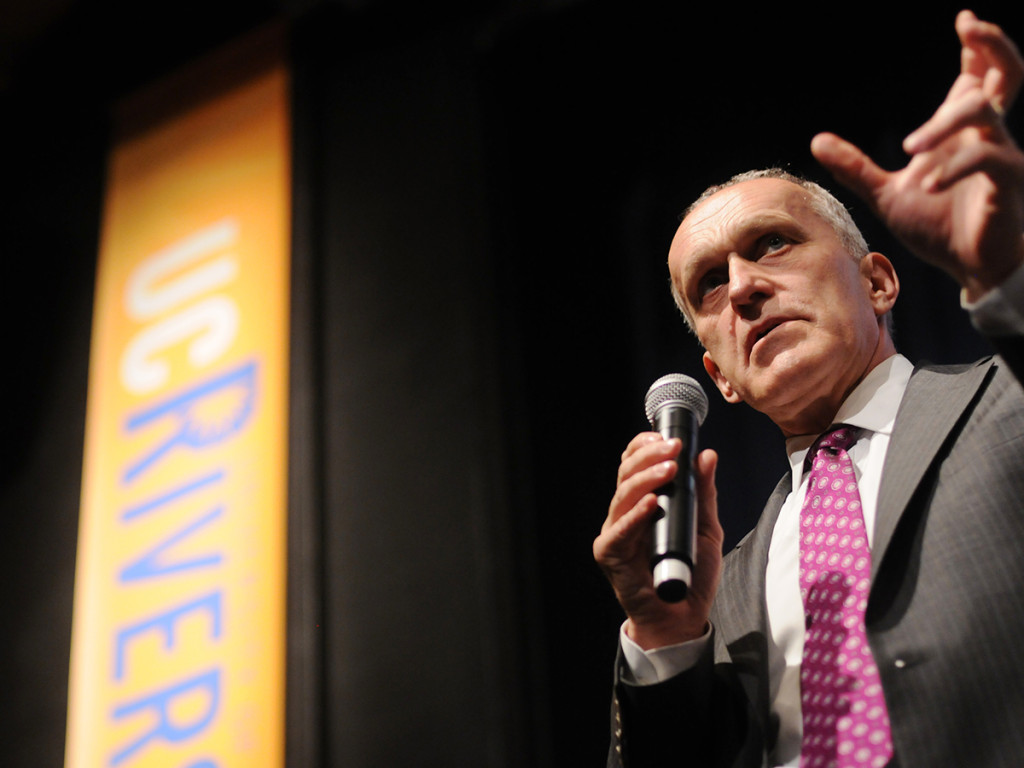
UCR Chancellor Kim A. Wilcox released his Physical Master Plan report to the public on May 26. The finalized plan, which outlines the campus’ plans for long-term physical transformation, was originally discussed at a town hall meeting that took place on Tuesday, May 3.
Notable additions to the campus that have been highlighted in the plan include the construction of a new event center, the Multidisciplinary Research Building 1 (MRB-1) and MRB-2. Renovations to existing buildings, improved transportation around campus and the creation of more aesthetically pleasing campus entrances have also been conceptualized in the plan.
The report describes the strategic expansion plan to create a physical environment that will open up the campus and expand new facilities in order to go from serving the current 22,000 students on campus to accommodate a possible 30,000 by the year 2025. The plan was initiated at the end of December 2014 and uses the profile of an Association of American Universities (AAU) institution as one success benchmark.
According to Barbara Lloyd, who serves as the communication liaison, the planning team that crafted the report incorporated input from approximately 450 individuals, which included faculty, staff, students, alumni and community members. The team described in the plan consists of a steering committee and a project management committee that will work with six specialized working groups: Campus logistics and safety, city and community, student life, sustainable infrastructure, sustainable practices and technology.
One major planning goal seeks to continue the theme of “simple buildings in a dramatic landscape” and to “integrate natural surroundings” by encompassing the inclusion of aesthetically pleasing designs that include the base of Box Springs Mountains and the Bell Tower, two of UCR’s notable campus identifiers.
Creating greater accessibility to the campus, a safer environment for pedestrians and bikers and shaping buildings to encourage collaboration and interaction are also some identified goals in the plan. Another change to be made aims to further implement the UC system’s sustainable practices into campus infrastructure and utilities.
Many of the plans illustrated in the report are undetailed with the purpose of allowing for specific needs to be identified and appropriate funding to be obtained, and with the intention to provide for broad and flexible recommendations moving into the future.
Vice Chancellor Maria Anguiano told UCR Today, “This study is meant to be a guiding vision for UCR. As campus needs are further defined and funding is identified, future projects will fit within this framework, ensuring an integrated growth plan.”








